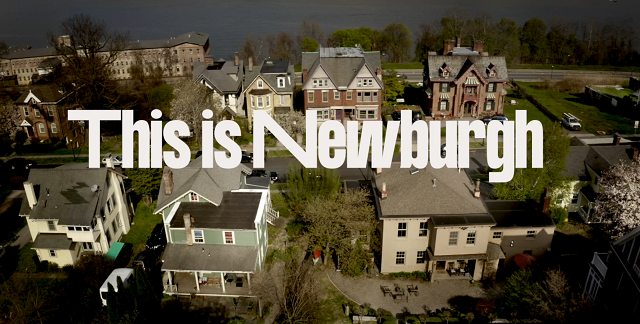With the decrease of river based industries, many cities and towns along the Hudson River faced decline in the 1950’s. Obviously Newburgh was no exception. Revitalizing Hudson Riverfronts is the title of a new guide published by Scenic Hudson, an organization that is dedicated to protecting and restoring the Hudson River. They have an interesting statistic on the current development trends in the Hudson Valley:
“Over the last several decades, the Hudson River Valley’s renaissance has turned it into one of the state’s fastest growing regions. Population in the 10 Hudson riverfront counties increased by nearly 15 percent between 1980 and 2006—roughly 50 percent faster than the state as a whole. Looking ahead, the region is projected to add more than 115,000 people over the next decade.”
With an increase in attention of the preservation of the Hudson River, people are seeing the potential of living in Hudson River Valley towns. Since the start of this blog in 2008 I haven’t really mentioned the proposed plan for the Newburgh Waterfront. We are in a recession right now, and that perhaps is one of the greatest factors that has delayed development. There were also rumors that Leyland Alliance, the developer went bankrupt. However, a press release in Forbes shows that Leyland is still very much active, and about to take part in a multimillion dollar project in Connecticut. Leyland is also still at the forefront of the East Parmenter Street project in Newburgh that is now completing phase 2.
I raise these points not to be controversial, but to show that although the waterfront development might not be the most talked about subject on this blog, it hasn’t been forgotten and Leyland is not out of the picture. A lot of people want to see the project through and guides like the one presented by Scenic Hudson give a glimpse of what a developed and environmentally restored waterfront could be like. On page 29 of the book, the Newburgh-Beacon ferry was even shown as an example of a seamless connection between transportation modes (ferry to Metro North). Scenic Hudson is also still trying to work out the kinks of creating a new riverfront park in Newburgh.
If out of the 115,000 projected new residents to the Hudson Valley in the coming decade, 5,000 come to Newburgh, imagine the change that could take place. Imagine the buildings that could be saved and restored. This guide was made to help local officials, planners, developers, citizen activists, and other stakeholders find common ground in a future vision for waterfront development. Take a look and see what you think. You can see the online version here, or request a printed version by emailing Jeffrey Anzevino at janzevino{at}scenichudson.org.







